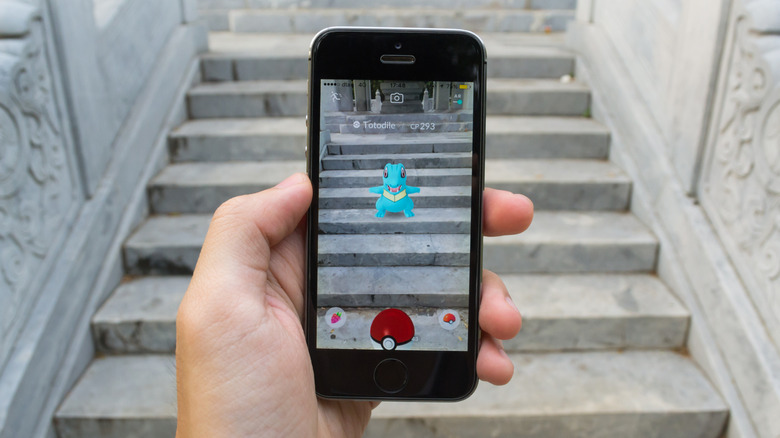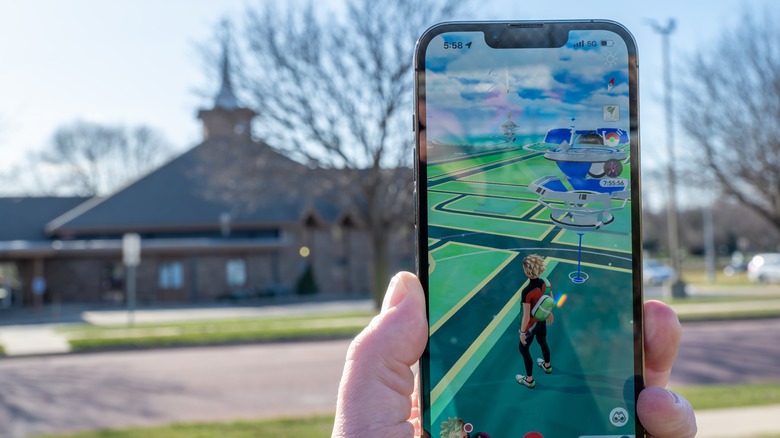Pokémon Go Players Helped Train An AI Without Even Realizing It
Niantic, the company behind augmented reality games "Pokémon," "Monster Hunter," and "Pikmin Bloom," has split its company in two, selling off the gaming half to games company Scopely. So what does the other half do? Niantic's remaining business, Niantic Spatial, is an AI map data company, building what it calls a large geospatial model (LGM). This LGM will be a map-based equivalent to large language models (LLMs), such as ChatGPT, which shook up the world a few years ago when it was first released.
LGMs will use millions of images taken in various locations to learn what buildings, streets, and landmarks look like so they can recognize and guess what a place might look like, even from angles it hasn't seen before. As Niantic explains, "Billions of images of the world, all anchored to precise locations on the globe, are distilled into a large model that enables a location-based understanding of space, structures, and physical interactions."
Niantic announced in March, "As we grew, the company naturally evolved along two complementary paths — one focused on creating games and bringing them to the world, and the other dedicated to advancing augmented reality, artificial intelligence, and geospatial technology." These two halves of Niantic weren't independent of one another. Niantic needed a lot of data to build its LGM, so it got that data from its players. "Pokémon Go" players send Niantic around a million scans every week, and some gamers feel duped.
Only data from scans has been harvested for the new AI tech
There was a bit of an outcry when Niantic first announced its geospatial AI plans, which is understandable. Players felt like they had unwittingly been part of a massive data harvesting operation. Niantic was quick to point out, however, that, for the most part, playing a game like "Pokémon Go" doesn't contribute to the AI data. "This scanning feature is completely optional — people have to visit a specific publicly-accessible location and click to scan. This allows Niantic to deliver new types of AR experiences for people to enjoy. Merely walking around playing our games does not train an AI model."
To access the scanning features, users needed to achieve a certain level within the game. They were then invited to take short, 360-degree videos of PokéStops, which could be signs, artwork, parks, or buildings. There were in-game rewards for doing this, like acquiring poffins to feed to your Pokémon. However, many users weren't keen on the new feature. They objected to scanning things like children's playgrounds, pointing out that it would look pretty suspicious.
Some Reddit users recommended creating intentionally terrible scans, like blurry videos of their feet. They would still get their in-game reward, and after a while, if their videos were considered too low quality, they would stop getting requests.
Were players who willingly uploaded these videos duped by Niantic?
The fact that Niantic was using this feature to collect data didn't really come as a surprise to anyone. Niantic's founder, John Hanke, previously worked for Google Maps, which is updated thanks to user contributions. However, the official instruction video gave the impression that the data was being used to improve gameplay in "Pokémon Go," stating (via Gamespot Mobile on YouTube), "The more scans we get, the sooner we will be able to release new features at these locations." There was no disclosure for the scan feature that explicitly mentioned that it was going to be used for an AI product.
Even after Scopely buys the games business, Niantic Spatial will still own the maps and provide them as a service to the new owner. Director of Product Management Tory Smith told Forbes, "It's not like there's a spigot being shut off. We just can't control how it evolves over time." Users knew that they would be helping the company make money — that's a given — but it was reasonable to assume that it was going to improve a game that they already enjoyed playing.
And while this tech was used to make improvements to the game, through the introduction of Pokémon Playgrounds, that wasn't the whole story. If it had been made clearer that the data was going to be used for a seemingly unrelated product Niantic was planning to sell to enterprise clients, more players might have refused to take part, even if it meant foregoing a few poffins.


